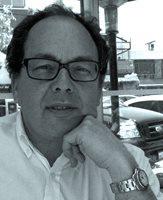Hello, my name is David and I’m addicted to stories. There, I’ve said it. Give me a good story and I am happy. Fiction, non-fiction in books, radio, theater, movies, comics, wherever found. The title of actor Corey Fischer’s one-man play Sometimes We Need a Story More Than Food is an apt description of me. Stories entertain, and educate us, providing a venue in which we can explore the heights and depths of the human. Stories around the world take the listener to other times and places by engaging our imagination, intellect and senses. Stories are as old as humans, e.g., the cave-paintings in France, Spain, Australia and Africa. The themes, myths and narratives found in Gilgamesh, the Bible, and other cultural narratives continue to be explored today -- everywhere. Tomes have been written about the art of storytelling, describing it in cognitive, psychological, anthropological, educational and other formal terms. But my blog here has much more mundane goals – to discuss the intersection of stories and museums, and technology and partnerships.
Through stories, we learn about our families, cultures, communities and histories. We also learn how to learn. In Narrative as Intelligence, cognitive psychologist, learning scientist, and educational reformer Roger Schank describes how individuals teach and learn by telling themselves stories about the subject at hand. Sometimes they are direct narratives, such as learning a new mathematical formula, but sometimes they are more indirect, such as remembering an “a-ha moment.”
We find stories everywhere -- around dining-room tables, in the classroom, the boardroom, the campfire, in schools, companies, government offices, and in every type of museum. Museums are one of the greatest institutions for creating and sharing stories. They are filled with art, science, and culture. Every object and artwork tells a story. Actually, each object tells multiple stories: the object’s creator tells one story, museum curators and educators tell other stories. These are the formal stories, based on theory, academic research, and historical context.
But no less important are the stories museums’ visitors create after reading guidebooks and listening to gallery talks about the formal elements of an exhibition. Visitors wander about looking at things that interest them in any order that they want, effectively curating their own personal exhibition while narrating their own story about the exhibition. As educators and museum professionals, we must remember that no matter what we write, say and do, the visitor’s experience and interpretation is deeply personal, providing surprising and often dynamic meanings that change over time.
Museums are repositories and archives of what humans create. Art, science, culture, and a sense of community are all represented in these institutions. Museum visits are not passive experiences. On the contrary, visitors actively create personal meaning through the stories they create and are inspired by the objects that they see. Although museum professionals (and in particular curators and educators), often focus on formal interpretations of objects on display (whether they are associated with art, science, or culture), visitors bring their own experience and knowledge, and develop their own stories and connections.
My own experience is a case in point. Years ago, I went on a museum trip with a high school class. I am not sure what the primary exhibition was, but I do remember being exposed to works by Monet, Stanton MacDonald-Wright and Mark Rothko. Although different styles, these three artists spoke deeply to me. I purchased postcards of work by each of these artists that became the foundation of a collection of postcards of images that have traveled with me and have found spaces on walls in various residences and workspaces of mine. The story that I created from these images was about color. Other visitors may have focused on subjects, artists, era, media or any number of ideas, but I looked at colors.
In some ways, this ability for museum visitors to create their own narratives by selecting what interests them relates to Howard Gardner’s ideas concerning multiple intelligences. Gardner describes how individuals gravitate towards subjects and disciplines that they are naturally attracted to, be it engineering, math, music, science or any other discipline. We see this same type of activity among museum visitors as they wander and explore. The Rashomon effect* also describes the types of experiences and narratives that visitors create. Each story is unique and authentic, and an integral aspect of the total unique experience.
* The effect of the subjectivity of perception on recollection, by which observers of an event are able to produce substantially different but equally plausible accounts of it.
David Greenfield is an educator, technologist, artist and museum professional. He has worked and consulted at museums as well presented at museum conferences. Currently he is a doctoral candidate in learning technologies at Pepperdine University.









Comments
David - I was very inspired by the post you wrote. It truly reflects your passion, your innovative mind, and your keen ability to connect and integrate ideas. I am teaching a career counseling class this Fall, and there is a unit on narrative career counseling - Your post got me thinking about the concept of “narrative as intelligence” and how it relates to our career development. I also love your description about the museum experience and how it incapsulated both persepctives! Thanks.
Add new comment